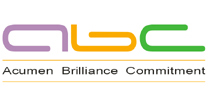Going paperless with the help of an ERP (Enterprise Resource Planning) system can bring numerous benefits to organizations, including increased efficiency, cost savings, improved data accuracy, and streamlined workflows. Here's how an ERP can assist in the transition to a paperless environment:
An ERP system offers robust document management capabilities, allowing organizations to store, organize, and retrieve digital documents in a centralized repository. Instead of relying on paper-based files, documents such as invoices, contracts, purchase orders, and reports can be digitized and accessed electronically through the ERP system.
ERP systems enable the automation of various business processes and workflows. This eliminates the need for manual handling of paper documents, such as routing them for approvals or reviews. Digital workflows can be configured within the ERP system, ensuring smooth and efficient movement of information and tasks across different departments.
An ERP system provides the ability to create and manage electronic forms. Instead of using paper-based forms, organizations can utilize electronic forms within the ERP system for activities such as data entry, employee onboarding, leave requests, and expense reports. This reduces the need for physical paperwork and enables faster processing and approval cycles.
ERP systems offer integrated communication tools, such as email, messaging, and notifications. Organizations can leverage these features to communicate and share information electronically, reducing the reliance on printed memos, letters, and faxes. Real-time communication through the ERP system promotes collaboration and ensures timely information exchange.
Many ERP systems have mobile applications that allow users to access and interact with system functionalities through their smartphones or tablets. This enables employees to view and update information, approve documents, and perform tasks without the need for physical paperwork. Mobile access facilitates remote work and increases productivity.
An ERP system facilitates the capture of data from various sources, such as barcode scanners, IoT devices, and automated machines. This eliminates the need for manual data entry on paper and ensures accurate and real-time data availability within the system. It also enables seamless integration with other systems, reducing the reliance on paper-based data transfers.
With an ERP system, organizations can generate comprehensive reports and analytics based on real-time data. This eliminates the need for printing and distributing paper-based reports, as stakeholders can access the required information digitally through customizable dashboards and reports within the ERP system.
Going paperless with an ERP system can improve compliance and data security. Digital documents can be encrypted, access-controlled, and audited within the ERP system, reducing the risks associated with physical document handling. Compliance with data protection regulations and retention policies becomes easier to manage.
